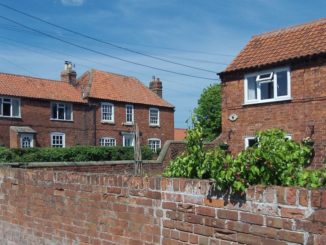It takes a week to cycle from Penzance to Berwick. It took me 40 years. Because on the way, I wanted to include every town in England, in what amounted to some two years of day-rides. Most of these rides were point-to-point, but some were loops, and some looked on the map like a dropped noodle. It wasn’t a continuous line, but many separate lines, and all rides included towns I had not visited before. I used trains to get to starting points. Each ride had to be at least 20 miles, and in each new town, I had to touch a central feature, ideally the market cross or town hall. This is just one of hundreds of rides on this lifetime’s journey. A few more journey writeups can be found at my “Riding the Shires” website, from which this was taken, at Riding the Shires. Half a century of cycle-touring. (along with a couple of long memoires of the Soviet bloc).
I was in my sixtieth year when I finally got to this ride, from Morpeth to the northernmost town in England. This was going to be quite a long ride as well as a milestone. Forty years earlier, I didn’t think much of knocking off 80 miles in a day. But by 2019, age had taken its toll and my daily average had dwindled to about 40. This run was over 50 including the lanes, and I’d already lost the morning, as it had taken hours to get up by train to Morpeth. Morpeth was the starting point, as I didn’t want to deal with the outer suburbs of Newcastle. So, as said, a ride for the annals. And so it proved, though, as is usual when I do ambitious sorties, for the wrong reasons.
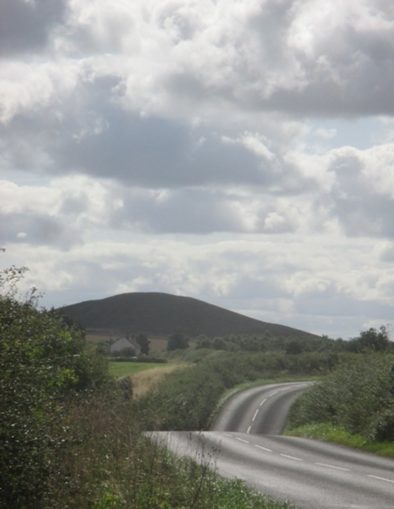
It was a fine, breezy day. An endless fleet of white clouds sailed across the skies, never quite dense enough to blot out the sun or the blue. Though it was September, the weather was still summery rather than properly autumnal.
Morpeth made an ideal starting point, a big market town just outside the North Tyne coalfield, commanding a huge tranche of empty farmland to the north and west. It was a market day, and the streets were loud with Geordie, that most intriguing of dialects, as it’s so different from all those surrounding it. Mor’eth, they called it, with the p glottalised. It’s easy to glottalise a t, but not a p (or a k, also glottalised up here, which is why true Geordie for Newcastle is New’ASTLE). These two glottals are as alien to standard English as the French r or the Welsh ll-, and require some practice to get right.
For me, Northumberland was indeed a whole new land; I’d never before ridden north of Hadrian’s Wall. I had however ridden alongside it, and had always been tempted by this vast, obscure, isolated triangle of moor and pasture rolling away to the far north and, in my imagination, into the realms of Viking and Celtic myth.
I set off first for the tiny villages of Hebron and Tritlington, aiming to pick up the coast road at Amble. The bustle was left behind in minutes, and the vast stillness of the Northumbrian hinterland soon descended on the scene. I’d expected this county to be bleak, but it was simply empty, undulating arable and pasture, through which frequent streams threaded their way in deep, lush gullies. The high stuff remained a dark crinkling on the far horizon. I don’t think I passed a single pub or shop all the way to the coastal belt. Just stone farmhouses here and there, and no sound but for snippets of birdsong from the hedges.
The history books will tell you it was the centuries of turbulence of the Borders that kept these lands thinly populated, and the fortified church-towers and farm buildings today bear ample witness to this. But I wondered as I rode if it wasn’t something else too. The Romans, 2,000 years before, created here the northernmost perimeter of western civilisation. When they left, perhaps it had simply never occurred to settlers to risk crossing into the barbarian regions. So the Borders remained outlands, left to the most adventurous and hardiest of the farmers, and later to the reivers and moss troopers who harried them. Just a thought.
I was using a very old one-inch map (I prefer this scale as I have a nerdy interest in every detail of the landscape). Its age didn’t matter much as roads generally never really change. But, I now discovered anew, features along them do. Between Chevington and Amble, the extensive mine-workings on my OS sheet had vanished under a nature reserve. As a result, I got lost, and ended up on a coastal footpath running into a strong sea breeze. That set me back an hour.
But I continued to dawdle — the going was too pleasant to hurry — and ambled into Amble at about three o’clock. This was an old coal port. A set of photos a newsagent had on display showed docks darkly busy with funnels, cranes and coal wagons, but today the town is more of a resort. The mining industry Northumberland was long notorious for vanished decades back, the newsagent said, but the charms of the region remained hidden until “Robson Green did it on the telly.”
Now, Amble was attracting retirees from the south. “Where property costs three times more than here. Northumbrian people are very welcoming, but unfortunately locals are being priced out of the housing market now.”
At Amble, I joined the Coast & Castles cycling route. If you’ve read other pieces in this series, you’ll know I rarely have nice things to say about official cycle trails, but this one, or at least the stretch I did, I couldn’t fault in any way. It was clearly way-marked, well surfaced offroad and routed through some absolutely glorious countryside, though you can’t really go wrong on the Northumberland coast. This county was pushing cycling harder than any other I have known. Old bicycles painted in Northumberland colours were left on fences as way-markers or signs that the cyclist was, for once, welcome. The Northumberland colours, by the way, are red and gold, and the flag, which claims the oldest design in England, looks oddly like a drain grill. You see it everywhere. (All English counties have flags, but only a handful, including Yorks, Lincs and Cornwall, have enough local pride to actually fly them much).
I’d been looking forward to the next leg of this ride, straight up the coast. It certainly rivalled anything in the West Country or the North York Moors, which have I think the most spectacular English coasts, but it had the great advantage for the cyclist of lacking severe climbs. You could enjoy this feast of scenery in relative comfort. The appetiser was served almost immediately outside Amble: the little town of Warkworth, which fills a loop in the River Coquet. It reclined in the shadow of a ruined castle that was a Percy seat for three centuries. Here I scoffed a pasty in the marketplace, and watched my bike topple over heavily in a gust, dislodging the seat.
The Percy clan dominated Northumberland. They came over with William the Conqueror — their original seat was the Normandy village of Perci — and a Percy pops up in nearly all the major upheavals of 500 years of early English and Scottish history. Only after the Civil War did they settle down to quieter centuries of land stewardship from their home to the present day at Alnwick Castle.

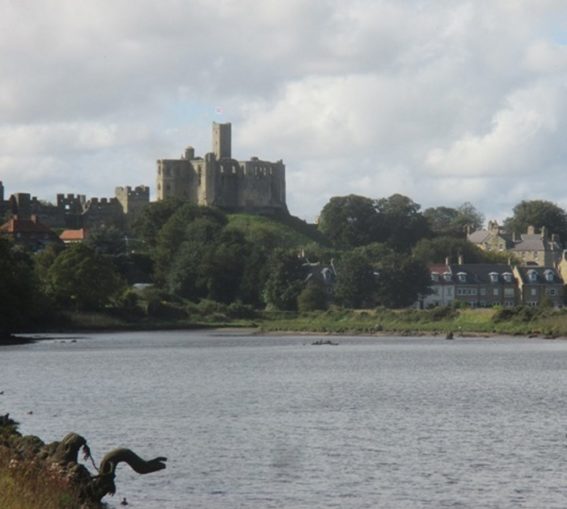
Onward then to Alnmouth, along one of the best off-road trails I have ever ridden, a tarmac way segregated by a hedge from a main road, which gave four slightly elevated miles of unbroken views over the coast, in particular to the pretty pastel facades of Alnmouth on its rivermouth promontory. The River Aln of course gives name to both Alnmouth and Alnwick. Alnwick is the old county town, and still retains some of county-wide administrative functions, but it’s tiny Alnmouth that has the station on the east coast main line. In one of the stupider branch-line cuts, the four-mile spur to Alnwick and points beyond was closed in 1968. Efforts are now being made to restore it.
After checking trains at Alnmouth station, to find out if I could use the line if things went wrong later (nope), I left the meandering and here rocky coast, and took long lanes past Boulmer RAF. The going was again very pleasant, but I was now getting antsy about the gradual sinking of the sun.
For a mile or two, I got stuck behind a hedge-trimming vehicle, which nearly filled the lane and littered the tarmac with thorny twigs and sprays. One gave my front tyre a half-centimetre-deep stab wound, which would have been a certain puncture had this happened a year before. But now I was using solid tyres, and, believe me, the reassurance you gain from knowing with 100% certainty you’re not going to get a difficult flat in the middle of nowhere with night not far off justified every penny of the considerable cost of buying the things and getting them fitted on. So cheers, Tannus of South Korea.
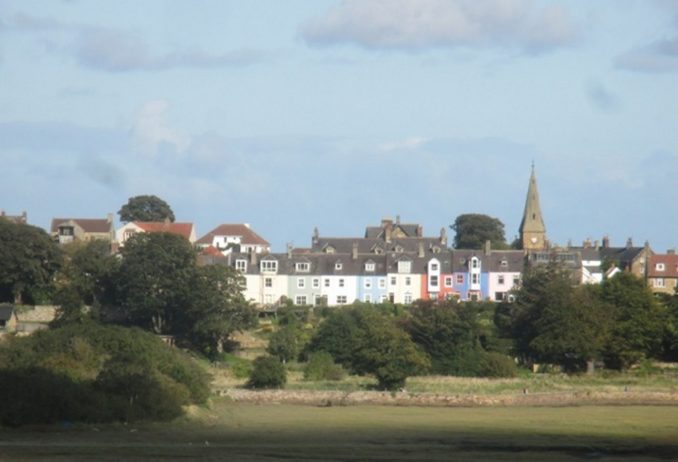
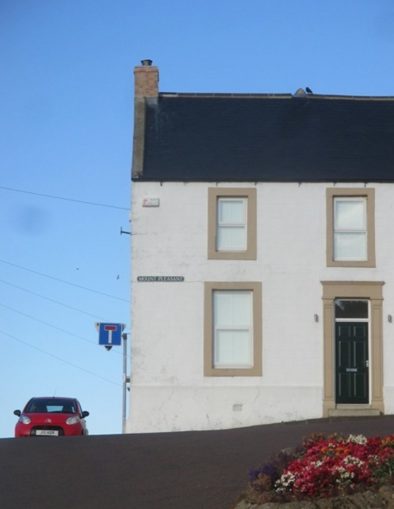
Back to the coast now. A couple of seaside resorts, Beadness and Seahouses, followed. At Seahouses, the accents were English, not Northumbrian. I word it that way because the whole trip felt a bit like going abroad, with a foreign flag flying in a foreign countryside with alien features like bungaloid croft-style cottages and farmyard pele towers. It was like being in Ireland, somewhere that was both familiar and slightly alien.
I cannot imagine there is a better way of approaching Bamburgh Castle than mile by slow pedalled mile, from the coast to the southeast. I’ve found since that Northumberland has several other castles that rival it, but this was finest fortress I had ever seen in England. Now wreathed in shadows, it loomed before me between the murmuring, darkling sea and the westering sun like some Spanish bulwark against the Moors, or a vision from Arthurian legend. I’m ashamed to say I knew nothing of its history. I assumed that something that lived up so completely to the stereotype of a fantasy castle had to be modern or heavily restored or just plain fake — a folly. But no. This, or rather its predecessor, was the capital of the Anglo-Saxon kingdom of Northumbria, which then actually was England “north of the Humber” and indeed stretched down to modern Derbyshire. Bamburgh fell briefly to the Vikings and was rebuilt by the Normans. It held a Scottish king prisoner, and was captured from the Lancastrians in the Wars of the Roses. After centuries of neglect, it was acquired by the Armstrong family, who founded the famous Armstrong Whitworth armaments plant on Tyneside. This family hold the castle today. They own one of the most glorious sights on any English coast.
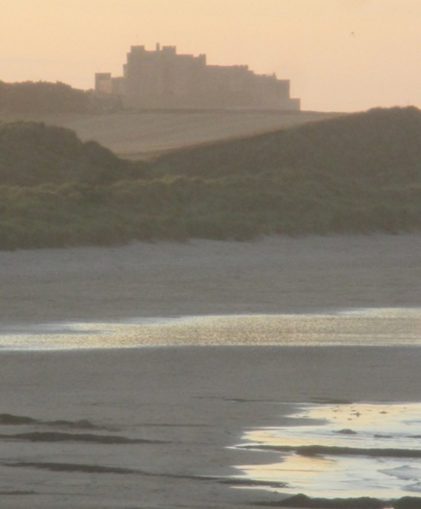
I rode right under its towering sandstone walls as I turned inland for Belford. Here, in the gathering dusk, things began to go non-citrous-shaped. At Bamburgh village, I checked at a bus stop if there was anything going to still very distant Berwick, again in case I needed help. I’d just missed the last one anywhere — I think it was to Belford. Bussing it inland to Belford would have saved me an hour, but wouldn’t have made much difference at this stage. Either way, I was going to be benighted well before the destination. Indeed, I might not get in before midnight. Realising too late how I’d let things slide, I pushed on, with renewed urgency tempered by growing tiredness.
The light lasted until Belford, where I popped into somewhere for a snack. When I came out, two minutes later, it was suddenly pitch black — when you cycle into the twilight, your eyes slowly adapt and you just don’t notice the darkness until you nip indoors for a moment. Even at night, Belford looked exquisite, a little crossroads town on the Great North Road that in centuries past would have been alive round the clock with horses, coaches, ostlers, “boots” and travellers. Now its neat, stone-built streets slumbered under a hazy fingernail-moon, which cast just enough of a glow to throw the dark mass of the stout church tower into relief. Here, I put the lights on.
But the front one was dim — how many hours of life could I count on? Idiot. And there was nowhere to buy batteries. Still cursing, I tried to put the more important back light on, fumbled and dropped it. It broke into two bits on the tarmac, with the clasp detaching. And I had no spare.
Oh fuck. A stream of obscenities filled the still Georgian streets of Belford, rousing a couple of gents supping their beers outside one of the old coaching inns. I pondered the situation. I had 15 miles to go, up the A1, in darkness, with no rear light, no buses or trains to fall back on, and, I could see from the map, no shop, village or hotel before the approaches to Berwick. I could barely read the map.
Tinkering with the broken light, I found that, once I’d snapped it back together, it would sort of work, but only with my hand pressing the two halves into each other. Obviously, a connection had been damaged. But if I cycled the whole way one-armed, holding out the back light in my extended right hand, I might be able to do this. There was no other option anyway, apart from bedding down in a ditch or spending a hundred quid calling a taxi out from Berwick. So, after another echoing volley of four-letter words, off I went.
Now I know what you’re thinking. You’re thinking, “Wait a minute, this fuckwit rode at night up the busiest highway in the kingdom, sticking his arm out in a way that every passing driver would see as indicating a right turn? For 15 miles?” And I know it stretches credulity beyond breaking point, but this genuinely didn’t occur to me.
For I was too preoccupied with picking my way along the gravelly gutter strip and constantly having to check the back light, because it kept flickering and conking out for short spells. These short spells grew longer as the batteries ran down, and my bellowed pleas — work, you bastard, work! — more desperate. Meanwhile, close to Berwick thankfully, the front light began dying too. Eventually I had to supplement it with my mobile-phone torch function, which shone about as piercingly as one of the moons of Pluto. On a misty night.
What made this dangerous, farcical progress possible was the fact that the A1 here wasn’t the motorway roaring with Eddie Stobart lorries that it is near, say, Hitchin or Doncaster. By this stage, it was more like a regular A-road. And it was straight, so I could at least keep up a decent pace. Be that as it may, it wasn’t short of lorries, and a few of their drivers took a few seconds to let me know via their horns what they thought of the idiot crawling along the gutter with his arm stuck out. One in particular had a bit of a tantrum, honking madly and flashing his array of headlights at me as if Pink Floyd were coming on stage at a baseball stadium. This was approaching the only village, named, appropriately enough, Scremerston.
Well, that ordeal took two hours. I wondered later if I had even been legal on the A1, lights or no lights. (Answer: Yes, I had. Cyclists are banned from the A1(M) bits only). Rarely have I cruised down a final hill into a new town with greater relief, even though the town in this case wasn’t Berwick itself but its tatty-looking dockyard neighbour Tweedmouth, on the south bank of the river. I crossed the magnificent old Tweed bridge, surrounded by the lights of the dockyard and the fine Berwick waterfront, and made my way through narrow streets to the town hall, the clock tower of which dominated the skyline even at night. There, I put a foot on the steps. Mission accomplished.
Had it not been Berwick I was bound for, the symbolic end of a very long odyssey, and had there not been a booked room waiting, I don’t think I would have done that last leg. Instead, I would have gone to a hotel while still on the coast. My lodgings were a big central townhouse in a side street right next to the park where they were staging the Berwick Food and Beer Festival. It had now reached disco time. Don’t blame it on the sunshine .. Blame it on the boogie, the PA system belted out as I wearily unpacked the bike.
I wasn’t bowled over by the room, which was small, noisy and without a private bathroom, something I kind of expect for £60. Nor was my bike very welcome. The landlady, already cheesed off at my near-midnight arrival, explained she didn’t usually accept cyclists “as those funny shoes they wear rip up my carpets.” This I could sympathise with (I don’t wear any cycling garb myself; I ride around dressed like a geriatric gardener). I wasn’t so cool with the five-pound charge she wanted to put the bike in the yard in the back. After picking up the bad vibes from her last guest of the day, she backtracked. But after she had locked it away, I realised I’d forgotten to take my supply of vodka and cranberry juice bottle out of the pannier. Best not bother her again. Bugger.
I went out to a pub to buy a small bottle of wine, as I felt my mere survival this evening, never mind the end of a 40-year trail, demanded a celebration. The pub was still very busy even though it was well past eleven. They know how to enjoy themselves up here. Two tipsy girls jigged about by a karaoke system, reprising Don’t blame it on the moonlight, blame it on the boogie. I swigged and reviewed the evening. I blamed it on recklessness, tightfistedness and poor preparation, three besetting flaws in my approach to long-distance cycling. Still, I’d made it. I’d drink to that.
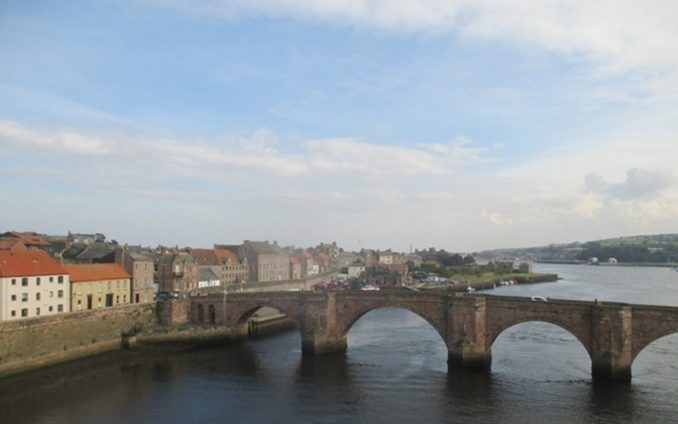
More like this can be found at my website Riding the Shires. Half a century of cycle-touring.
I’m fine with being quoted (up to two paragraphs), but all rights @joeslater.
© text & images Joe Slater 2025


